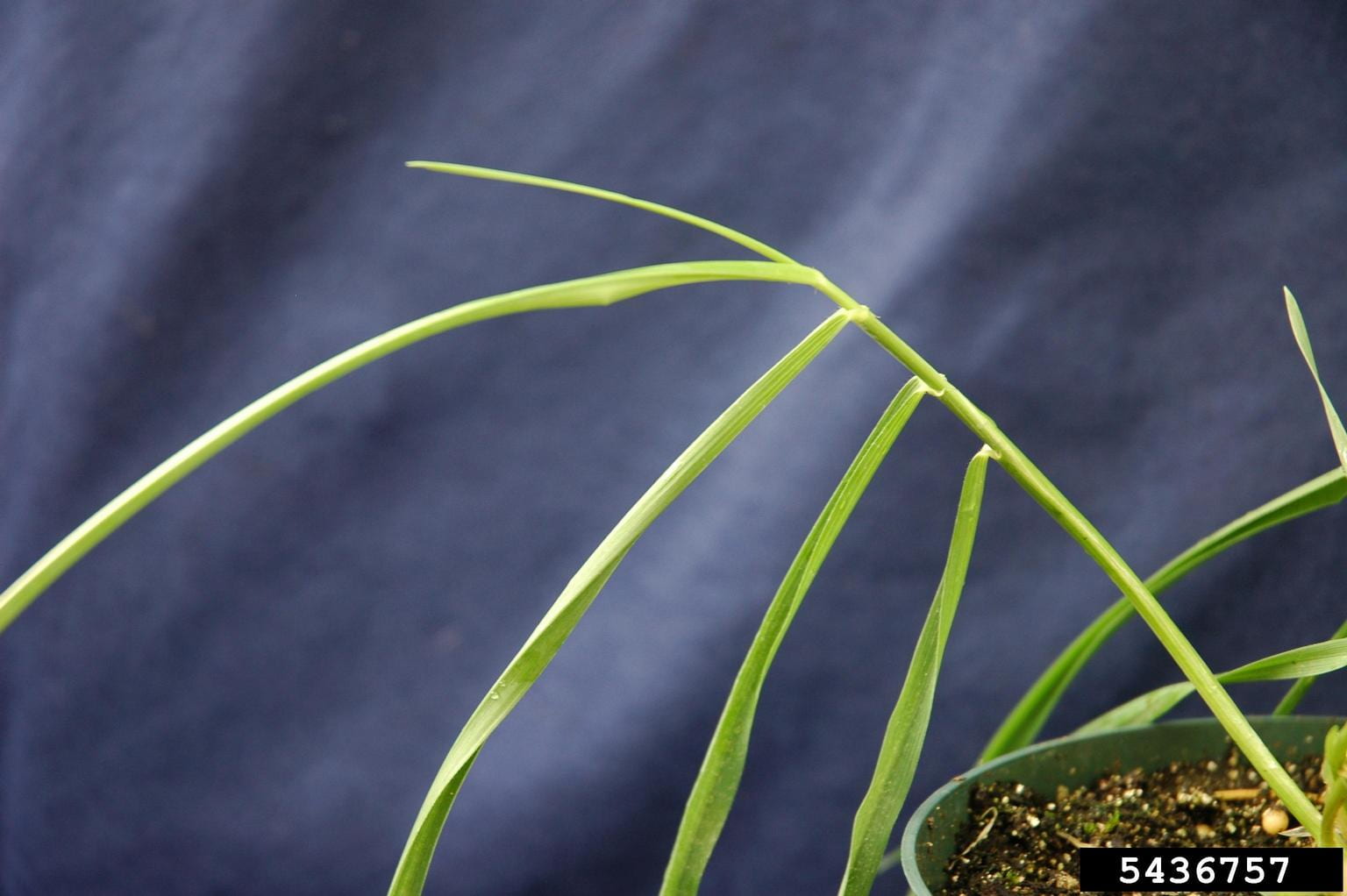Scientific name: Bromus secalinus
Other names: chess, rye brome
Cheat/chess grass (Bromus secalinus) is a summer or winter annual weed that is typically a problem in cereal crops; in New York it is most commonly found in winter grains, a field crop. This weed is found across the U.S. and grows best in full sun and dry conditions. It spreads by seed and can germinate in light or dark conditions.
Note: there is another grass species that is commonly referred to as “cheatgrass” and is in the same genus, Bromus, as B. secalinus. Therefore, close attention to identification characteristics between these species should be considered when distinguishing between B. secalinus (common names cheatgrass, chess grass, or rye brome) and B. tectorum (common names: cheatgrass or downy brome). See the similar species table below for clarification.
Similar species
Table 2: Shows Cheat/chess grass (Bromus secalinus) similarities and differences in identification compared to its similar species: Downy brome or cheatgrass (Bromus tectorum) and common velvetgrass (Holcus lanatus).
| Species | Cheat or chess (Bromus secalinus) | Downy brome or cheatgrass (Bromus tectorum) | Common velvet grass (Holcus lanatus) | ||
|---|---|---|---|---|---|
| Similarities | Ligule: membranous; smooth or occasional hairs on blades and lower sheath | Ligule: membranous; blade hairs are dense, short, and soft | Ligule: membranous; dense hairs on blades and leaves | ||
| Differences | Awns shorter in length (0.12-0.20 in or 3-5 mm) compared to B. tectorum | Awns are long (0.40-0.70 in or 10-18 mm); blades of seedlings are twisted | Awns are short (0.04-0.08 in or 1-2 mm); back of ligule at maturity is hairy; sheaths compressed; blades of seedlings not twisted |
Identification
Seedlings: The leaf bud is rolled. Leaf blade is initially twisted so it looks like it is spiraling upwards.
Ligule length: 0.03 in (1 mm)
Flowers/fruit: The flower head (panicle) has drooping spikelets, and the seeds are yellow to reddish brown in color. It has awns, but shorter (3-5 mm) than the awns on B. tectorum/downy brome (10-18 mm).
Inflorescence: 1.5-8 in (3.8-20.3 cm)
Spikelet size: 4 in (10 cm) wide by 7 in (18 cm) long
Flowering time: June-August
Management
Chemical control
When planted in the fall or in winter wheat systems, mesosulfuron-methyl and thiencarbazone-methyl (such as Osprey Xtra) can be used to control the spread of cheatgrass.
Use this tool to look up the efficacy of herbicides on a particular weed species. For general guidance on weed control, get the latest edition of the Cornell Crop and Pest Management Guidelines.
Non-chemical control
Managing B. secalinus in fencerows, alleys, and border areas before seed set can reduce seed rain into grain fields. Increasing planting density of winter cereals can reduce B. secalinus growth and seed set; make sure your seed grain is brome-free. Cleaning farm equipment reduces spread from one field to another. A delay in planting fall crops gives time for chess to germinate, which permits the destruction of seedlings during bed preparation.
Herbicide resistance
Reported as of 2021:
North America
U.S.
Group 2 (Kansas and Oklahoma)
Other continents
None
For a more detailed report, please visit the reference section below or visit the International Herbicide-Resistant Weed Database homepage for more information: http://www.weedscience.org/Home.aspx
References
For another resource on B. secalinus ID, check out this Invasive Plant Atlas of the United States page, which includes a map of the US of current and projected distribution.
For information on chemical control (and other topics of interest) relative to Ontario, Canada, consider browsing through the Ministry of Agriculture, Food, and Rural Affairs site on B. secalinus.
To look up the accepted names or distribution of B. secalinus specific to New York State, consider the New York Flora Atlas page.
If you are interested in B. secalinus in a more global sense, check out the CABI Invasive Species Compendium datasheet.
For general guidance on weed control, get the latest edition of the Cornell Crop and Pest Management Guidelines.
Uva R H, Neal J C, DiTomaso J M. 1997. Weeds of the Northeast. Book published by Cornell University, Ithaca NY. The go-to for weed ID in the Northeast; look for a new edition sometime in 2022.
Images included from Invasive.org. Offers an extensive online library of images for invasive and exotic species of North America.
Images also included from wikimedia.org.
Detailed Herbicide Resistance (2021)
North America
U.S.
South West: Kansas and Oklahoma, group 2 (imazamox, propoxycarbazone-Na, pyroxsulam, and sulfosulfuron)
Other continents
None





